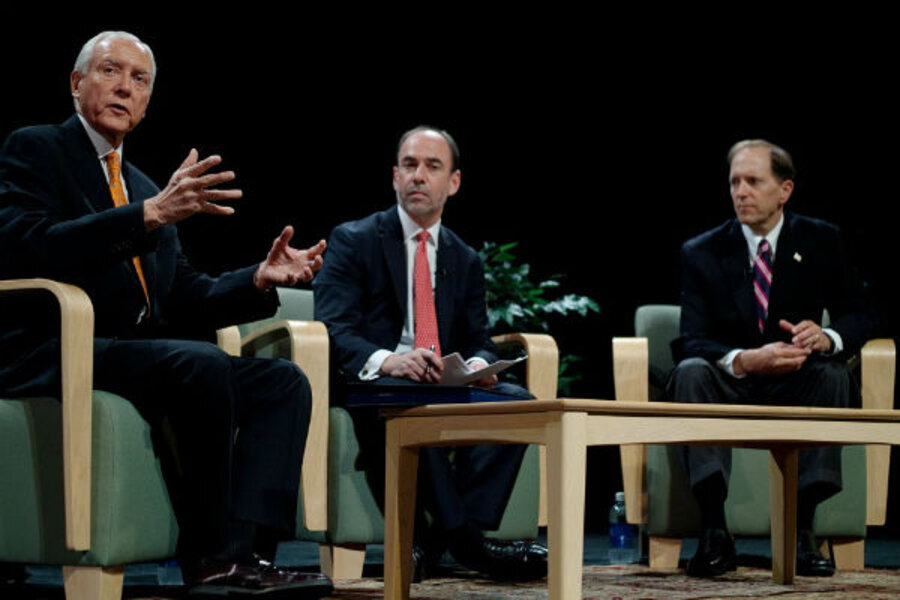Is the GOP tax reform strategy a fiscal trap?
Loading...
I recently blogged on Doug Holtz-Eakin’s four-step framework for tax reform. His roadmap—first agree on a progressive tax code, a top rate, and the total amount of revenue to be raised, then cut the tax preferences necessary to accomplish the first three—has generated lots of interest.
But Chuck Marr over at the Center on Budget and Policy Priorities is no fan.
In his own blog, Chuck argues that the Holtz-Eakin model is a fiscal trap that would increase both deficits and income inequality. Thus, he presents his own alternative four-step plan:
1. Let the Bush tax cuts aimed at households making over $250,000 expire on schedule.
2. Agree on how much additional revenue to raise, alongside significant spending cuts, as part of a balanced deficit-reduction package.
3. Agree on specific revenue-raisers while maintaining or improving tax progressivity.
4. Reduce tax rates below their scheduled current law levels only if Congress can cut enough tax preferences to meet the revenue target without gimmicks.
The differences between the two models are subtle but very important. Let’s look at a couple:
Doug, a former director of the Congressional Budget Office and top economic policy adviser to President George W. Bush and the 2008 McCain for President campaign, wants to fix revenues as a share of Gross Domestic Product. Thus, Congress would agree that the new revenue code would raise X percent of GDP in taxes without regard to what revenues would otherwise be under some baseline.
By contrast, Chuck wants Congress to agree on how much additional revenue to raise relative to current law.
Mathematically, you can end up in the same place, but journeys are very different. Chuck would continue the argument we’ve been having since 2001, and it is a debate that has gotten us absolutely nowhere. First there is the hopelessly unproductive squabble over baselines—additional revenue relative to what? That could be resolved if later this year President Obama convinces Congress to permanently extend most of the 2001/2003/2010 tax cuts. But that’s a massive if.
Chuck’s strategy forces Republicans to swallow an in-your-face tax hike—something they are simply not going to do. They are no more likely to accept this than Democrats would agree to a Social Security reform that is presented as a cut in benefits. Framing matters.
The second big difference is the order in which they’d move toward reform. Doug would first fix a revenue target and the top rate, then scale back tax preferences to meet those twin targets. Chuck would first broaden the tax base. Congress would cut rates only after it agrees to the tax hikes it needs to meet its revenue increase target.
Chuck’s fear is that Congress would blink when confronted with painful base-broadening and that the revenue target, not the lower rates, would inevitably give way.
Joe Minarik, a veteran of the 1986 tax reform process who is now at the Committee for Economic Development, is generally supportive of Doug’s formulation, but in his own blog he agrees with Chuck that it makes more sense to get the tax base right and then fix the rates.
As a matter of pure tax policy, I agree with Chuck and Joe. Ideally, Congress should build the best possible tax base and then adjust the rates to meet an agreed-upon revenue target. But I think they misread the psychology of today’s policymakers.
Look at recent history. For decades, policy wonks have urged Congress to eliminate popular tax breaks to help meet a goal of deficit reduction. Lawmakers have responded by repeatedly adding tax subsidies and increasing the deficit.
This is not working. Perhaps lawmakers would do a better job of dumping tax preferences if their goal mixed the sweet of rate cuts with the bitter of deficit reduction.
Sure, Chuck may be right that all this is a Republican Trojan Horse—a clever strategy to lower rates and increase deficits and inequality. Mitt Romney’s tax reform (at least that part he is willing to describe) would do just that and is not, as they say, a confidence-builder.
Still, Doug’s roadmap has the benefit of reframing what has so far been an entirely non-productive debate. Will it work? As I said in my original post, probably not. But it has a chance. Merely repeating the arguments of the past decades does not.







